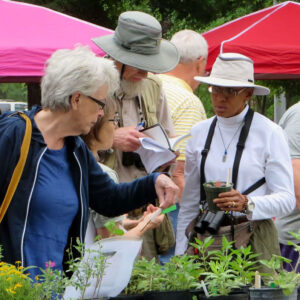By Calvin Finch Ph.D., Guest Author
Entice the widest selection of feathered finery with thickets and tangles.
The most attractive landscape to the widest selection of birds is one that offers thickets and tangles. The cover offers nesting sites during the breeding season. In the winter it offers protection from severe weather and predators.
A landscape with a diversity of plants that grow together to form thickets, provides both shelter and food such as insects, seeds and berries for wintering birds like cardinals, American sparrows and towhees.
If you delight in a landscape dominated by grass, you’ll likely have less birdlife. You may want to compromise by dedicating back corners or thick hedges to encourage the birds. Any plantings that provide cover at least six feet deep is significant. Excellent hedges include Chinese holly, its cousins ‘Burford’ and ‘Carissa’ holly, the yaupons, bluewood condalia, butterfly rose and members of the Viburnum family.
A landscape with a mix of tall and short trees, large and small shrubs, and groundcovers is the ideal mix to attract the largest selection of birds. It also makes it easier for you to observe them without disturbing them.
The landscape with good habitat includes both deciduous – those that lose their leaves in the winter – and evergreen plants. Evergreen plants provide more shelter from the weather and predators but deciduous plants are often good nesting sites and/or provide important blooms, berries and nuts. Also, wait until late February or early March to rake leaves or prune branches.
There are several excellent resources to help you create a bird-friendly landscape. One of my favorite books is “Attracting Birds to Southern Landscapes” by Thomas Pope, Neil Odenwald, and Charles Frying, Jr.
Visit GardenStyleSA.com for more ideas on creating a wildlife friendly landscape.


